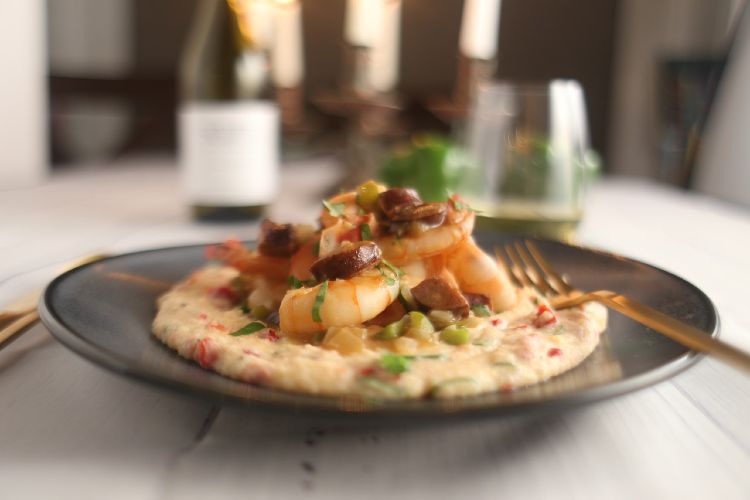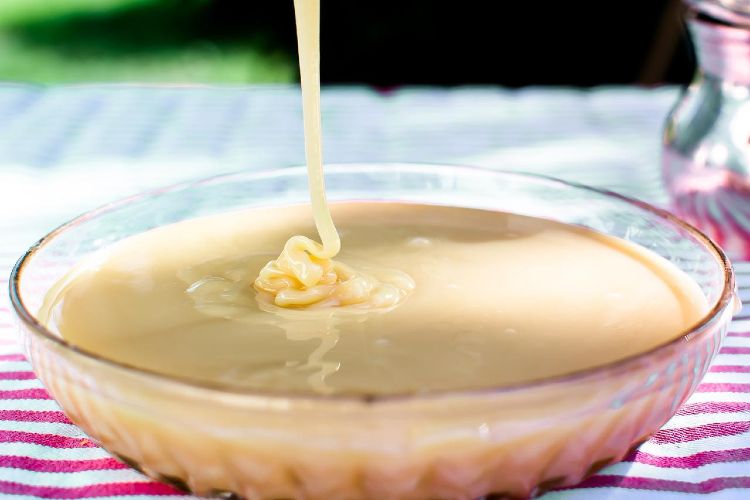The Art of Food Photography for Today’s Lifestyles
In my seventh article on the history of food photography I will be looking at how present-day food photography has a much more creative outlet and significantly relates to today’s lifestyles.
The March 2009 issue of Waitrose Food Illustrated, in particular, is filled with a number of features examining the relationship between art and food. Photography and style director, Tabitha Hawkins celebrated the relationship between food and art by commissioning photographers to produce images in the style of paintings in a 10-page feature and cover story. One image by Jonathan Gregson shows a late 18th century still life, taking direct influence from Jean-Siméon Chardin. The fruit seems to act as an allegorical reference.
The everyday objects are blended into a realistic atmosphere, yet there is a feeling of illusion, created by the soft lighting and the juxtaposition of food and utensils. The objects in the photograph suggest that this scene is to be painted, strongly indicated by the paintbrush in the water pot.
More recently, Waitrose Kitchen produced a beautiful food photo story, photographed by Gus Filgate. Tabitha Hawkins pushed for the idea to be used in the magazine, as the images are dark – unlike the usual style of the other photographs. The contrast between light and dark areas of the photograph are strong and not usually seen in food photography, as this style of lighting isn’t necessarily the most appropriate in the genre. The beautiful images could be framed and mounted for exhibition in a gallery.
Images from the March 2009 issue, along with sixteen other Waitrose Food Illustrated photographs from previous years (by Rob White, Yuki Sugiura, Con Poulos and David Loftus), were exhibited in the Waitrose Food Illustrated’s ‘Food and Art’ Exhibition, which ran for two months in the Café and Trafalgar Room at the National Gallery. The exhibition celebrated 10 years of the magazine and tied in with the launch of The National Cookbook, compiled from recipes from the National Dining Rooms’ kitchens.
This event highlights the significant connection between the commercial and art world, something that hadn’t linked together before in food photography. It is only in recent times that food photography’s purpose is not only appreciated for its commercial means but also celebrated as an art form.
Equally beautiful are some very different images from an Ikea baking book “Hembakat Är Bäst”, or “Homebaked Is Best”, photographed by Carl Kleiner. A popular technique demonstrated here is to photograph food from above, taking a bird’s eye view. The food styling, by Evelina Bratell, is unlike traditional baking books: ingredients are laid out firstly in a rather stark yet beautiful arrangement, followed, secondly, by the baked-end product. Swedish design and marketing agency Forsman & Bodenfors were attempting something different, inspired by high fashion and Japanese minimalism. The book puts the ingredients in focus as very graphical, still-life shots, with the actual baked product as an afterthought.
Another cookbook that focuses on ingredients is “What to Cook and How to Cook It” by Jane Hornby, published by Phaidon. The images are photographed in the same bird’s eye view style. Arguably, this appeals to the consumer more because it is their view as if looking down at the dish before sitting at the dinner table to eat the food.
Following the photographs at each stage of the recipe, the reader sees how their food should look at each stage. A focus on raw ingredients has grown: they are being photographed alongside recipes in magazines and cookbooks.
Perhaps people in the UK cook less, but read more cookbooks and watch more cooking television shows. There’s always a place for beautiful cookbooks, whether the recipes are cooked or not. The reader still consumes the cookbook while not necessarily cooking from it. Food photography is being noticed for the artistic visions in the images – not just because people want to eat.
In recent years, food photography has been taken much more seriously as a genre and has been considered as an aesthetic art form. It is no longer perceived as just functional, much like the consumption of food is not just functional anymore. Consumers are making choices about food just as they make choices about interior design and art. Food photography now has a much more creative outlet, much like fashion photography, and significantly relates to today’s lifestyles.
While this is the natural end to my series on the history of food photography, I continue to find more and more interesting resources on the subject. It has allowed me to conclude that while there is not a specific, comprehensive history on food photography, there is still a substantial amount written about it, reflected by increased consumer interest in food and diet in today’s Western, consumerist society. While the genre has been constrained to commercial realms, we have seen that it is slowly becoming credible in the art world with notable exhibitions and highly creative features appearing in popular food magazines. I hope that there will be a continuation of this in the future as the subject is ever changing and its possibilities infinite.
Further Information
Helen Grace Ventura: www.helengraceventurathompson.com

